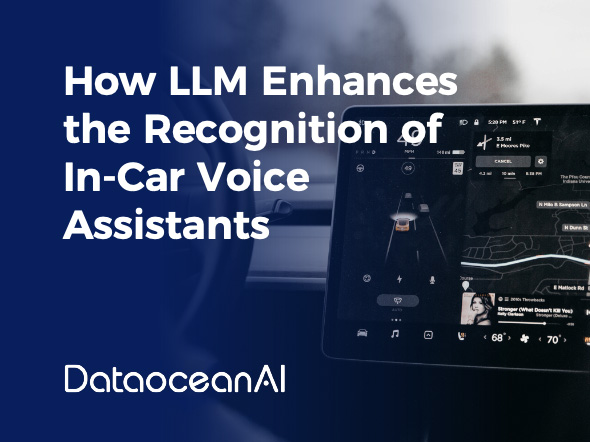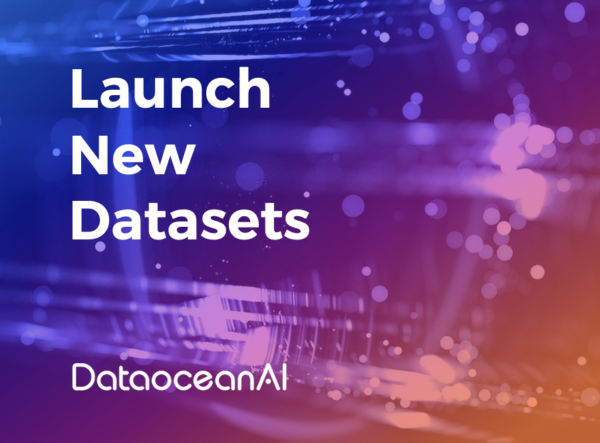As LLM becomes the product that major internet companies compete to show their strengths with, car manufacturers are also joining in the trends to train and develop LLM. In fact, implementing LLM in car companies’ intelligent voice assistants can indeed greatly enhance user experience, but there are still many challenges to be addressed.

The Impact of LLM on Car Voice Assistants
Enhancing the Recognition Capabilities of Car Voice Assistants
• Improved Accuracy: Advanced voice recognition models like Whisper can recognize speech with higher accuracy, which is particularly important for car systems as they often operate in noisy environments. Recognition based on LLM can further improve the effectiveness and robustness.
• Multilingual and Dialect Support: These LLM typically support multiple languages and dialects, enabling car systems to serve a global user base.
Having a More Natural Interaction Experience
• Context Understanding: Models like GPT-4 excel in understanding complex contexts and user intentions, which can enable car voice systems to provide more personalized and natural interaction experiences.
Smooth Conversation: For example, the voice synthesis LLM used in GPT-4 can generate coherent, natural responses, making conversations with the car system more fluent and human-like.
Enhancing Services and Features
• Information Retrieval and Processing: Utilizing models like GPT-4, car systems can offer more complex information retrieval and processing services, such as real-time traffic analysis, route planning, etc.
• Assisting Safe Driving: By understanding and predicting drivers’ needs and intentions, car voice systems can more effectively assist in driving safety, for example, by reducing driver distraction through voices.
Barriers to Deploying LLM in Automotive Environments
There are some technical barriers to deploying LLM, such as GPT-4 or Whisper, into car voice assistant systems.
• Computational Resource Limitations
When deploying LLM like GPT-4 or Whisper into car voice assistant systems, a key technical challenge is handling the limitation of computational resources and the need for real-time responses. Large deep learning models usually require significant computational resources for real-time data processing. However, compared to servers or cloud computing platforms, car systems typically have limited computing power, including lower processor performance and less memory capacity. This means that car systems might struggle to support the real-time computational demands of LLM. Car voice assistant systems need to be able to respond quickly to user commands and queries. This places high demands on the inference speed of the model. However, LLM, due to their complex network structures, may show slower response times during inference. This delay could affect user experience, especially in driving environments where quick decision-making and responses are needed.
• Domain Mismatch—Scarcity of Relevant Vertical Domain Data
When deploying advanced voice recognition models like Whisper into car systems, even though these models have achieved or are close to human-level recognition on some English datasets, there are still a series of challenges and limitations when directly applied in actual car environments.
These challenges mainly include domain mismatch issues, differences in acoustic environments, and specific voice characteristics and data scarcity issues related to the car environment. Although Whisper performs well on some standard English voice datasets, these datasets are usually recorded in standardized, relatively quiet environments.
However, voice data in car environments have different characteristics, and the Whisper model may not have been exposed to a large amount of car environment data during training, which could lead to a gap in recognition performance in actual car environments compared to training. Various noises present in car environments, such as engine noise, road noise, wind noise, etc., differ greatly in acoustic properties from the standard datasets used in model training. Background noise in such environments can severely affect the accuracy of voice recognition.
Voice interactions in-car systems often contain specific commands and terminology that may differ from the corpus originally used in training the model. Furthermore, high-quality, diverse car environment voice data may be difficult to obtain, limiting the model’s training and optimization capabilities in this specific domain.
Solutions
• Limited Resources: To overcome the limitations of computational resources within car systems, LLM like GPT-4 or Whisper might need to run in the cloud. This architecture relies on stable and high-speed data connections to achieve real-time data transmission and processing. Furthermore, optimizing the model inference process is crucial. Using specialized hardware accelerators such as GPUs or TPUs can significantly improve inference speed. Appropriately employing model lightweighting and inference optimization techniques, such as neural network pruning and efficient inference engines, can also enhance processing speed. In some cases, asynchronous processing techniques can be used to process voice without disrupting the primary driving tasks.
• Domain Mismatch: To improve the model’s performance in car environments, it’s possible to further train or fine-tune the model with data collected in actual vehicles to better adapt to this specific application environment. Addressing issues of domain mismatch, differences in acoustic environments, and specific speech characteristics, as well as enhancing the diversity and quality of the dataset, can improve the accuracy of voice recognition in actual car environments. Meanwhile, reliance on high-quality, multi-scenario, multilingual car data is essential.
DataOceanAI provides a large amount of in-car ASR data to better enhance the ability of in-vehicle voice assistants.
King-ASR-642: American English Speech Recognition Corpus (Incar) >>>Learn More
The data is recorded in an environment with vehicle noise and collected from a total of 40 speakers, including 20 males and 20 females, all of whom have been carefully screened to ensure their standard and clear pronunciation. The transcriptions cover domains such as navigation, text messages and news.
King-ASR-643: France French Speech Recognition Corpus (Incar) >>>Learn More
The data is recorded in an environment with vehicle noise and collected from a total of 41 speakers, including 22 males and 19 females, all of whom have been carefully screened to ensure their standard and clear pronunciation. The transcriptions cover domains such as navigation, text messages and news.
King-ASR-645: German Speech Recognition Corpus (Incar) >>>Learn More
The data is recorded in an environment with vehicle noise and collected from a total of 43 speakers, including 21 males and 22 females, all of whom have been carefully screened to ensure their standard and clear pronunciation. The transcriptions cover domains such as navigation, text messages and media.








